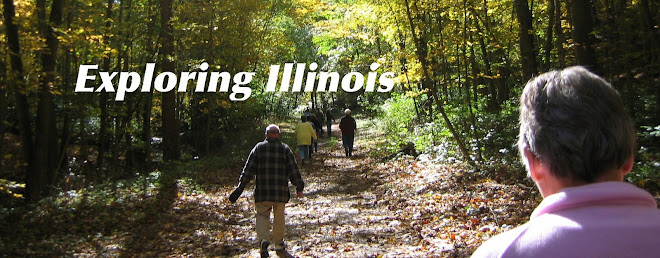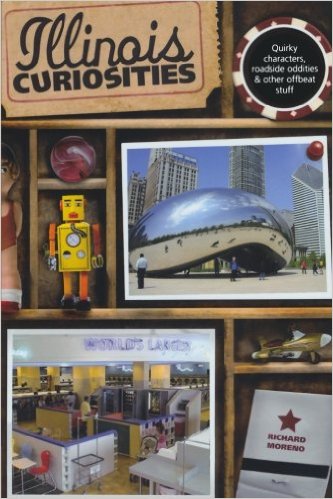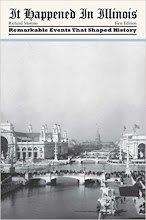
When most people think about huge ancient monoliths, they picture pyramids in Egypt, temples in Greece or Mayan and Aztec structures in Central and South America. They don’t, however, usually look to America’s Native people for such constructions.
But nearly camouflaged across the wide expanses of the American Midwest and South are thousands of earthen mounds, some quite large, that, in their own way, are as impressive as any stone structure built in Athens or Machu Picchu.
Archaeologists believe that the mounds were built over a long period of time, between about 3,000 B.C. and 1,200 A.D. (scientists aren’t in agreement over when mound building started).
The mounds served as burial places for the Native Americans as well as the foundations for ceremonial temples and homes of prominent individuals and families.
Dickson Mounds, located 5 miles southeast of Lewistown, Illinois, is named after the family that once owned the site. It is recognized as one of the best examples of Native American burial mounds and is the site of the Dickson Mounds Museum, which is devoted to telling the story of the region’s earliest inhabitants.
The first people to arrive in the Dickson Mounds area are believed to have been hunter-gatherer Indians who arrived in the Midwest and Eastern U.S. about 10,000 years ago. About 1,000 B.C., a group that has become known as the Woodland Era Indians began to settle throughout the region.
Scientists believe the Woodland people built the first mounds, which were primarily used for burials. According to historian David K. Turner, the Woodland people had a fairly well developed culture with burial practices that included cremation as well as wrapping bodies to preserve them and burying bodies in a face-up position.
Turner said the Woodland people apparently believed in an afterlife and buried tools and supplies with the deceased. He said the mounds have also yielded digging tools, arrowheads and baskets for carrying the earth used to form them.
About 800 A.D., the Woodland Era ended as Mississippian Native Americans moved into the region. The Mississippian people are thought to be the builders of the largest and most impressive mounds in the Midwest, including Dickson Mound and the giant Cahokia (or Monks) Mound in East St. Louis, Illinois.
The Dickson Mound site was a good location because it overlooked the Illinois River and the wetlands of the Illinois River Valley, meaning it was close to fresh water and food. The Mississippians maintained a village at Dickson Mounds until about 1200 A.D., when they mysteriously abandoned the area.
The modern history of Dickson Mounds began in the 1800s, when pioneer Americans began to settle in Illinois. By then, the mounds had blended into the surrounding countryside, resembling the natural rolling hills found throughout the state.
Following the War of 1812, tracts of land throughout the state were given to war veterans. When those farmers began to prepare their land for planting crops, they found a variety of Indian artifacts.
The first white settlers in the area included the John Eveland family, which bought the land at the foot of the Dickson Mounds bluff, including the site of a prehistoric Indian village.
In 1833, William Dickson purchased the bluff and, in 1866, while clearing trees to plant an orchard, he discovered an ancient Indian burial ground. A few years later, his son, Thomas, destroyed a section of a burial mound while building a house.
In 1927, Thomas Dickson’s son, Dr. Don F. Dickson, began carefully excavating a portion of the mound. Dr. Dickson, who was a chiropractor, recognized the importance of preserving the site so he dug around the buried bodies, leaving them in situ, or in place the way they were found.
His work attracted University of Chicago archaeologists, who excavated in the area and established many of the methods and field techniques now standard in archaeological digs.
On his family property, Dr. Dickson uncovered the remains of nearly 250 Native Americans, which he protected, first, under a tent, then enclosed in a museum building. From the 1930s to 1992, the skeletons and hundreds of artifacts unearthed by Dr. Dickson were displayed to the general public in the private Dickson Mound Museum.
In 1945, Dr. Dickson, who died in 1964, sold the site to the state of Illinois. He and his family were employed by the Illinois Department of Conservation to manage the museum, which they did for the next two decades. In 1972, a new museum structure was built on the site, which was designed to resemble the low, squared shape of the original mounds.
In the early 1990s, Illinois state officials responded to repeated requests from Native American groups to properly respect the Indian remains by agreeing to re-cover the burial site and rebuild the museum so that it did not expose the remains to the public.
The result is that while the remains are no longer available for public viewing, the museum’s nature and scope has changed significantly. The revamped facility opened in 1994 with a new focus on the history of the various people who have lived in the Illinois River Valley region.
The museum contains permanent displays describing the history and development of the region, the native people who once lived there and the area’s rich plant and animal life. It also boasts rotating galleries, a well-stocked gift shop and meeting space.
The 230-acre Dickson Mounds Museum complex encompasses the location of two cemeteries and ten mounds. The Eveland Village Site, near the museum building, includes the remains of three excavated ceremonial Mississippian buildings, which can be viewed in the summer months.
An observation deck on top of the museum building offers a good overview of the surrounding mounds, which really do look like small hills. On a bluff top just above the confluence of the Illinois and Spoon Rivers, which is visible from the deck, visitors can see the Larson Site, believed to have been a Mississippian temple town.
The museum is open daily from 8:30 a.m. to 5 p.m. and there is no admission charge. For more information, call 309-547-3721, or go to www.museum.state.il.us/ismsites/dickson/geninfo.html.




